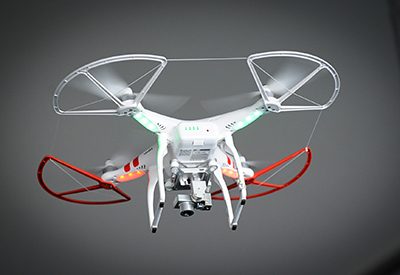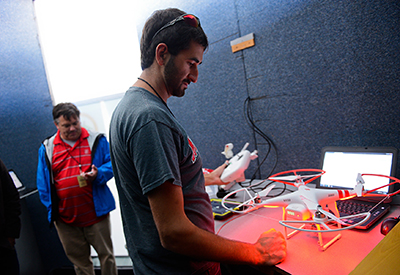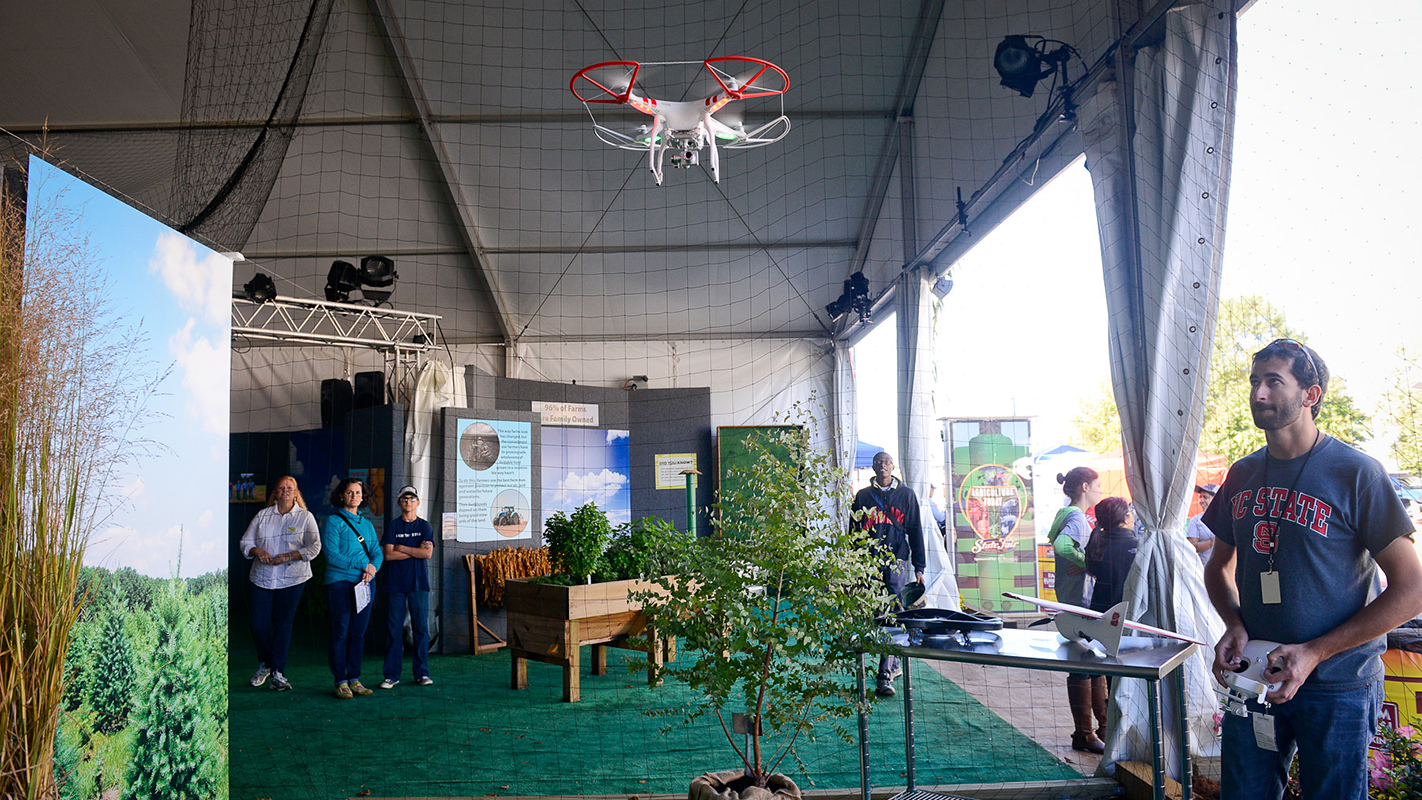Unmanned aircraft, like sneaky late-night radio UFOs, are hovering over the 147th North Carolina State Fair. Except that these small radio-controlled devices actually exist and are part of a new wave of agricultural technology being developed by NC State engineers.
Three times a day at the fair – which continues this week and ends on Sunday – members of the champion NC State Aerial Robotics Club demonstrate the vast money-saving potential and worthiness of the small unmanned aerial vehicles, which can provide farmers with invaluable information about how to improve their crops for just a few pennies.
Like the world’s largest alligator and smallest horse, however, the UAV demonstration is inside a cage. Well, it’s really a net, hanging over the hard-sided Agriculture Today tent on the south side of Dorton Arena that allows operators to fly the small – but expensive – equipment overhead without the threat of it falling on someone.

“It would be hard to fly something in the open areas over the fair, because there are far too many people,” says Tom Zajkowski, the flight operations manager for NC State’s NextGen Air Transportation Center (NGAT) at NC State’s Institute for Transportation Research and Education (ITRE). “But this is something that is important to the future of agriculture in North Carolina.
“And that’s what the fair is all about.”
First Time at the Fair
It’s the first time the unmanned systems – please don’t call them “drones” – have appeared at the fair, Zajkowski says, at the invitation of North Carolina Agriculture Commissioner Steve Troxler. They will be out front of the Ag Today exhibit, along others exhibits of modern precision agriculture.
The UAVs fly inside the tent, showing fair-goers real-time video and some static models of what information can be gleaned from North Carolina fields. UAVs have a multitude of uses outside of agriculture, as well, including up-close inspection of bridges, law enforcement and first-responder needs.

Compared to piloted aviation, with much larger aircraft and greater operational needs, UAV costs are low. It’ takes less than a dollar of electricity to power a half-hour flight.
The upfront costs are not insignificant. In 2013, NGAT received a grant from the GoldenLeaf Foundation to purchase two unpiloted aerial systems, with two planes, two control systems, two laptop computers for data analysis and multiple high-resolution cameras for still and multispectral imagery.
“We’ve been flying and collecting agricultural research with our GoldenLeaf-funded equipment since July of 2013,” say NGAT Director Kyle Snyder. “This program has been a great partnership of state resources from the start – with the Department of Transportation, Department of Agriculture, the Chief Information Officer’s office, the Department of Commerce and GoldenLeaf.
“It has also touched a wide spectrum of research at NC State, including mechanical and aerospace engineering, crop science, soil science, natural resources, ECE and ISE.”
Bird’s Eye View
Now it’s time to begin showing the public the fruits of those collaborations.
“We are finally to the point where we have enough equipment and data to actually tell a story of what we do, not just share a plan about what we can do,” Snyder says. “This year will be an introduction. Next year we will present more of a package with data and results.”
NGAT has submitted a proposal to be the home of the Federal Aviation Administration’s UAS Integration Center of Excellence, which will conduct research over the next five years to support safe, managed integration of UAS into commercial, domestic airspace.
The FAA will make its selection later in the fall.
- Categories:



